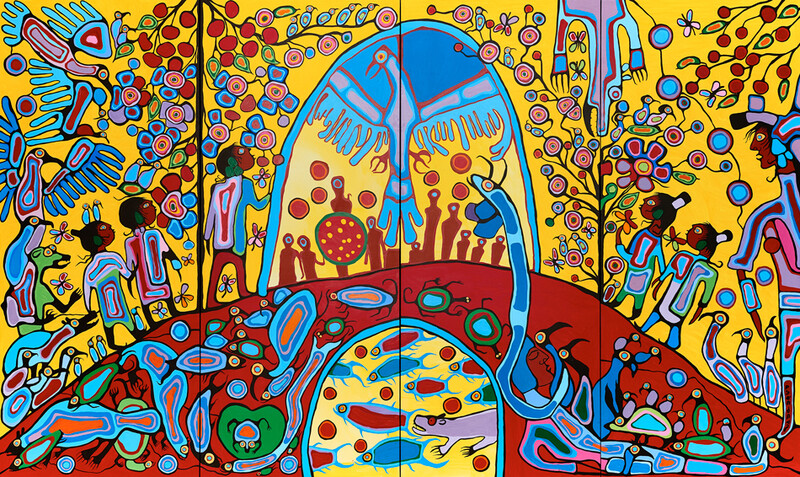The ringleader of the largest art fraud operation in Canadian history — and, per one investigating officer, in world history — was sentenced to 5 years in prison yesterday.
Catch-up: For three decades, Gary Lamont spearheaded a ring of three separate but connected groups creating fakes of art by Norval Morrisseau — the acclaimed Anishinaabe artist who founded the Woodlands School movement and was dubbed the “Picasso of the North.”
-
The true scope of Morrisseau forgeries came to light in 2012 after the keyboardist for the Barenaked Ladies (you read that right) sued an art gallery that sold him a fake.
-
Police launched an investigation in 2019 and laid charges this March against Lamont (who’s also a drug dealer, sex criminal, and one-time murder suspect) and 7 others.
-
Investigators have identified 190 fakes produced by the ring and have seized 117. It’s unknown how many forgeries are still out there, but it’s believed to be at least 5,000.
Why it matters: Most recent estimates put the value of Canada’s visual arts auction market at over half a billion USD. Art fraud depresses this market by sowing doubt — once a buyer is burned by a fake, they may never buy again — and can sink the value of authentic pieces.
-
Painters in the Woodlands art movement that Morrisseau founded have seen their earnings stunted by pervasive forgeries.
- Gallery owners estimate Woodlands artists earning $5,000 a painting could make 10 times that if the market were clean.
Zoom out: Indigenous artists are particularly vulnerable to forgeries as their works are often understudied, and knock-offs of items like masks and totem poles are cheaply made abroad.
Big picture: The Morrisseau case, as well as a high-profile case of art theft, have renewed calls for Canada to step up its fight against art crime, including updating copyright laws, enacting anti-money laundering laws for art, and creating a federal arts-fraud division.—QH
